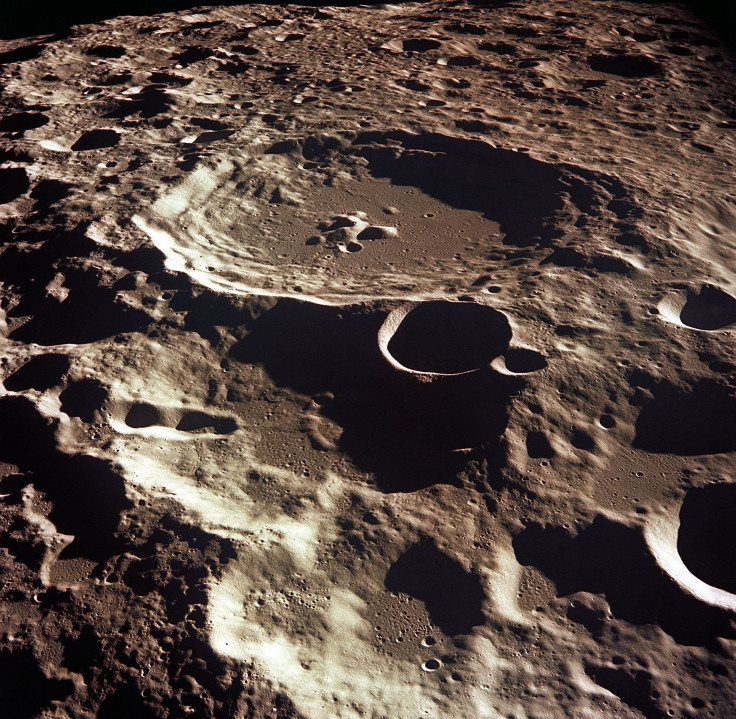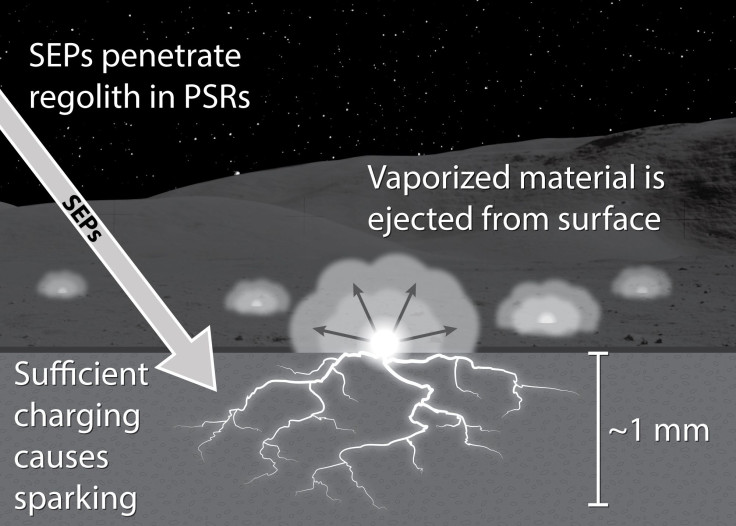NASA-Funded Study Reveals Solar Storms Can Cause Dielectric Breakdown In Moon’s Permanently Shadowed Regions

There are regions on our Moon that, because of the orientation of its axis of rotation to Sun’s light, are permanently shrouded in darkness. A new NASA-funded study, based on data gathered by the space agency’s Lunar Reconnaissance Orbiter (LRO), has now revealed that although Sun’s light cannot penetrate into these permanently shadowed regions (PSRs), charged particles in powerful solar storms can.
According to the researchers, these particles can trigger a process known as dielectric breakdown, vaporizing and melting the lunar soil almost as much as meteoroid impacts would.
“About 10 percent of this gardened layer has been melted or vaporized by meteoroid impacts,” lead researcher Andrew Jordan from the University of New Hampshire, Durham, said in a statement released Friday, referring to the regolith. “We found that in the moon’s permanently shadowed regions, sparks from solar storms could melt or vaporize a similar percentage.”
Dielectric breakdown has previously been observed in labs. It is an explosive process wherein an insulator — a dielectric material — begins to conduct electricity when subjected to a “breakdown field.” On the moon, this happens when charged particles — ions and electrons — in solar flares and coronal mass ejections slam into the surface and form two layers, one close to the surface and the other slightly deeper, in the PSRs.
“The PSRs are so frigid that regolith becomes an extremely poor conductor of electricity. Therefore, during intense solar storms, the regolith is expected to dissipate the build-up of charge too slowly to avoid the destructive effects of a sudden electric discharge,” NASA explained in the statement.

Understanding exactly where this process takes place on the Moon is crucial for comprehending the history and evolution of Earth’s natural satellite.
“The PSRs are important locations on the moon, because they contain clues to the moon’s history, such as the role that easily vaporized material like water has played. But to decipher that history, we need to know in what ways PSRs are not pristine; that is, how they have been weathered by the space environment, including solar storms and meteoroid impacts,” Jordan said.
The researchers would now search for evidence of dielectric breakdown in other regions of the Moon, including areas exposed to frigid temperatures during the long lunar nights.
© Copyright IBTimes 2025. All rights reserved.





















